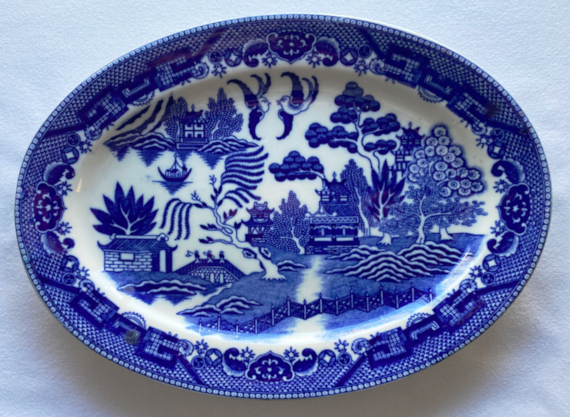Oyster Sauce Chicken Thighs
A braise of oyster sauce, garlic, ginger, rice wine, soy sauce and cayenne pepper gives chicken thighs a delicious, sticky Chinese barbecue sauce finish.
Servings 4
Ingredients
- 4 chicken thighs, bone-in, skin-on, about 1/2 pound each
- olive oil
- 2 or 3 large cloves garlic, minced (go generous—see Kitchen Notes)
- 3 tablespoons minced ginger (see Kitchen Notes)
- 3 tablespoons oyster sauce (see Kitchen Notes)
- 2 tablespoons Shaoxing rice wine (or sherry)
- 2 tablespoons reduced-sodium soy sauce
- 1 teaspoon sugar
- generous grind of white pepper (black pepper also okay)
- 1/4 to 1/2 teaspoon cayenne pepper (optional—see Kitchen Notes)
- 1 cup hot water
- 1 or 2 scallions, thinly sliced
- cooked white rice, if desired
Instructions
- Trim excess fat from chicken thighs. Heat a tablespoon or so of olive oil in a large, deep skillet over medium-high heat. Add chicken thighs skin side down and cook undisturbed until skin is golden brown, about 7 to 9 minutes. Reduce heat to medium.
- Turn chicken, and add garlic and ginger to pan, stirring to spread the aromatics around the pan. Cook, stirring occasionally, for about 4 minutes.
- Meanwhile, mix oyster sauce, rice wine, soy sauce, sugar, pepper, cayenne pepper and hot water in a large measuring cup. Add mixture to the skillet (it will spatter pretty well). Cover the pan, reduce heat to medium-low and cook chicken for 15 minutes. Turn chicken, stirring the sauce, then cover pan and cook for another 10 minutes.
- Remove lid from pan and raise heat to medium-high. Cook, stirring occasionally, until sauce thickens enough to coat a spatula. (Alternatively, if your sauce has cooked down too much already, stir in a little water. Turn chicken thighs a couple of times to coat with sauce.
- Serve with white rice, if desired, spooning sauce over chicken and rice, and sprinkling sliced scallions over all.
Kitchen Notes
Be generous with the garlic. Most recipes are. Some include as much as 10 cloves, but simply peeled. Mincing the garlic helps imbue its flavor into the sauce.
Ginger, fresh or in a tube? Fresh ginger has a real knack for going bad before we use it, so we’re big fans of fresh ginger in a tube or squeeze bottle, already very finely chopped. Use fresh or the tubed kind, depending on what you have on hand, 3 tablespoons of either.
Oyster sauce—what kind? We recently tried Megachef Premium Oyster Sauce, made from oysters caught off the east coast of the Gulf of Thailand. It is wonderful. That said, the brands you find in the grocery store are actually quite good, for the most part. Bon Appétit has some great advice on using and shopping for oyster sauce here.
Spicing things up. Some recipes call for adding whole dried red peppers, the things you often find in spicy Szechuan dishes and set to the side. You can use 4 or 5 if you have them, but cayenne pepper does a great job and evenly spreads the heat throughout the sauce—and you’re likely to have it in your pantry already. We used a 1/2 teaspoon and got a nice kick to the dish. You can use 1/4 teaspoon for a more subtle spiciness. Or you can skip it.
 Liz’s Crockery Corner. The platter here is one of many varied pieces of Willow pattern china we have, collected from various flea markets and antique shops over the years. This one is Blue Willow, far and away the most popular color, and it was made in Japan. You can read more about Willow pattern china’s history (it originated in the late 1700s) and our personal history with it here.
Liz’s Crockery Corner. The platter here is one of many varied pieces of Willow pattern china we have, collected from various flea markets and antique shops over the years. This one is Blue Willow, far and away the most popular color, and it was made in Japan. You can read more about Willow pattern china’s history (it originated in the late 1700s) and our personal history with it here.
 Liz’s Crockery Corner. The platter here is one of many varied pieces of Willow pattern china we have, collected from various flea markets and antique shops over the years. This one is Blue Willow, far and away the most popular color, and it was made in Japan. You can read more about Willow pattern china’s history (it originated in the late 1700s) and our personal history with it here.
Liz’s Crockery Corner. The platter here is one of many varied pieces of Willow pattern china we have, collected from various flea markets and antique shops over the years. This one is Blue Willow, far and away the most popular color, and it was made in Japan. You can read more about Willow pattern china’s history (it originated in the late 1700s) and our personal history with it here.